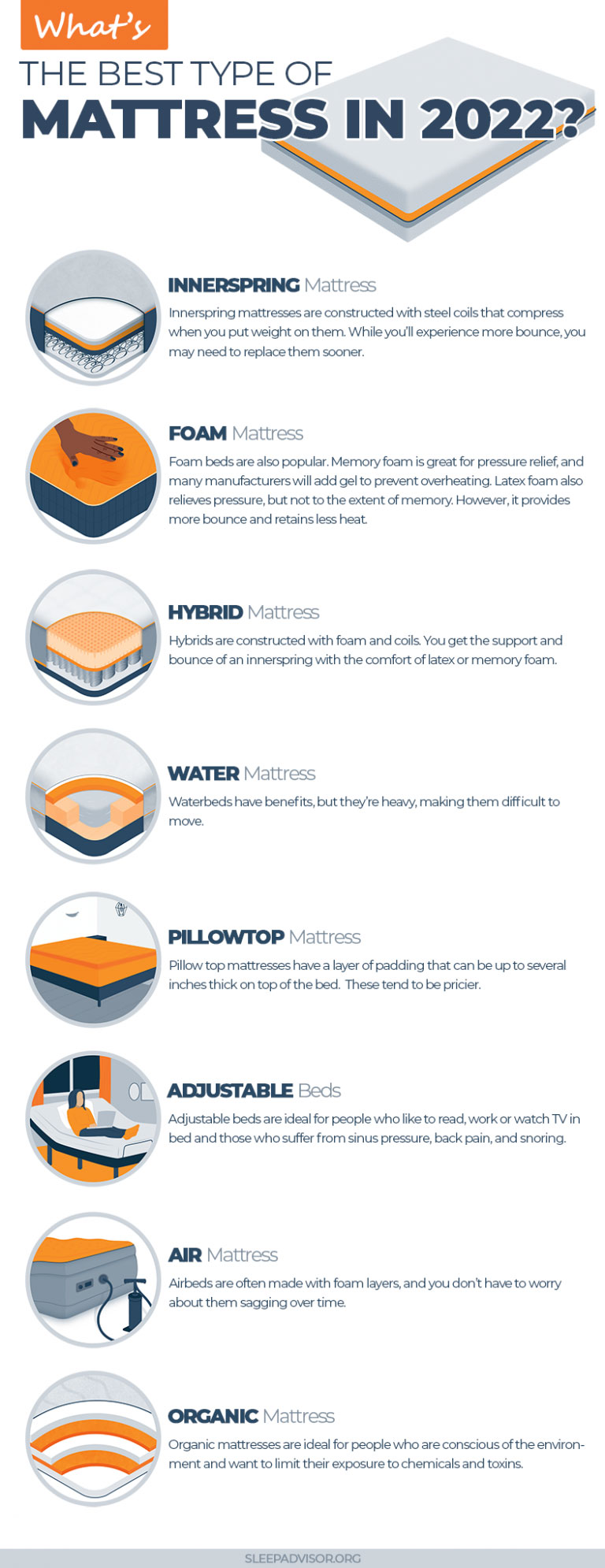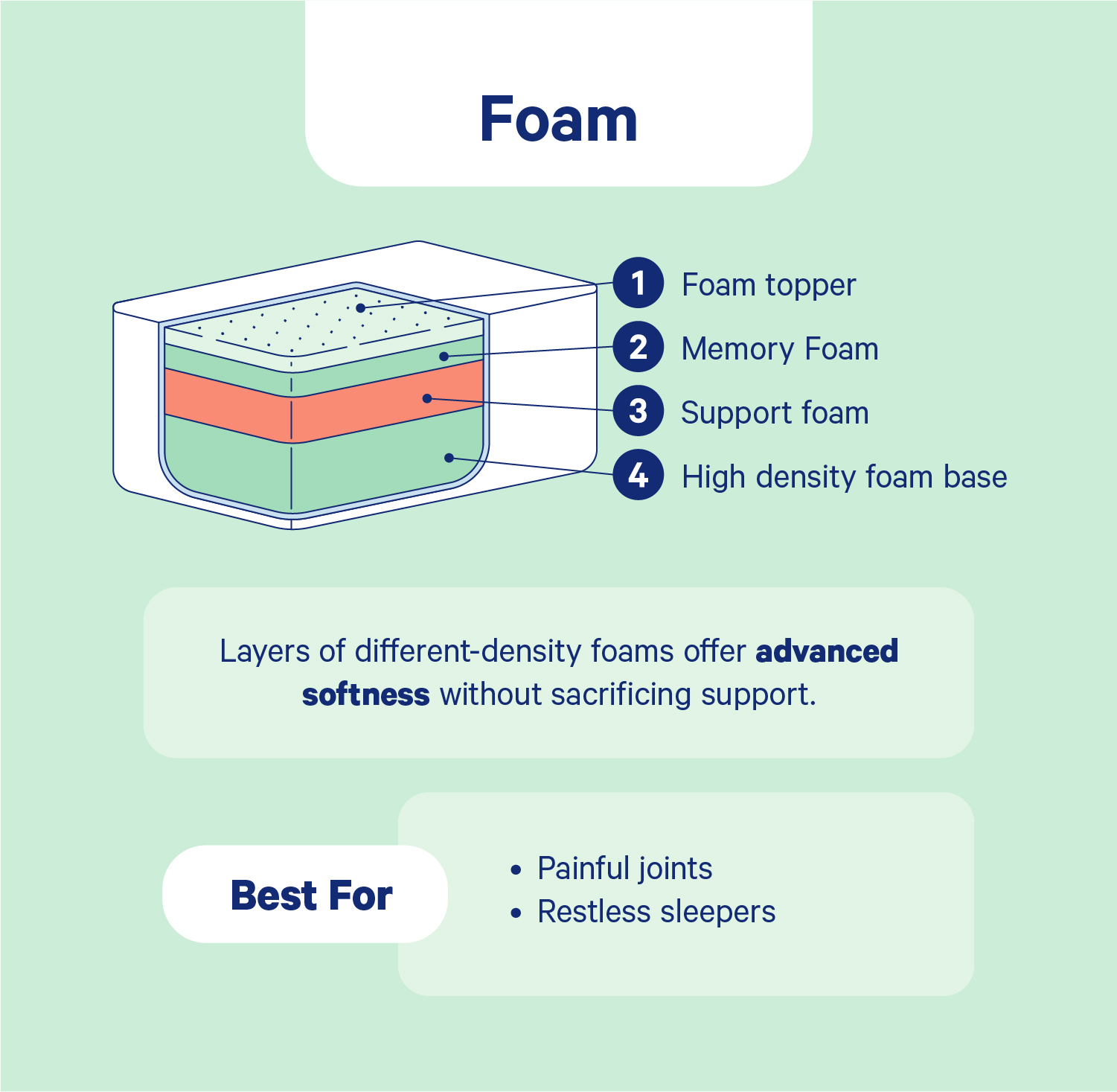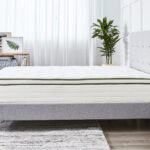Are you looking for answers to the question “What is mattress made of?” If so, you have come to the right place. In this article, we will explore the different types of mattress materials, so you can understand what goes into making a mattress and make an informed decision when you’re shopping for a new one. We’ll discuss common materials and their benefits, as well as how mattress construction plays a role in comfort and durability. By the end of this article, you will have a better understanding of what is inside your mattress and how it affects your sleep.
Types of Mattress Materials

Foam
Foam mattresses are made from polyurethane foam, which is a strong, resilient material. It is typically used as a comfort layer and provides good pressure relief. The foam used in mattresses is usually high-density, which means it is more durable and will retain its shape over time.
Memory Foam
Memory foam is a type of foam that is highly responsive to body heat and weight. It is designed to contour to the shape of your body and provide support where it is needed. Memory foam is also known for its motion isolation capabilities, which means that it absorbs motion and reduces motion transfer.
Latex
Latex is a natural material that is derived from the sap of rubber trees. It is highly durable and provides good support. Latex mattresses are also known for their breathability and responsiveness, making them a great choice for those who sleep hot.
Hybrid
Hybrid mattresses are made from a combination of different materials, such as foam, latex, and innerspring coils. They are designed to offer the best of both worlds: comfort and support. The foam and latex comfort layers provide pressure relief and contouring, while the innerspring coils provide support and bounce.
Innerspring
Innerspring mattresses are made from metal coils that are wrapped in fabric and padding. They are designed to provide support and bounce, and are usually the most affordable option. The number of coils and their gauge will determine the firmness and support level of the mattress.
No matter how mattress are made, it is important to choose one that is comfortable and supportive. Each type of mattress material has its own unique benefits, so it is important to research and understand the differences before making a purchase.
How Mattress are Constructed

Mattress Components
A mattress is comprised of several components, including an outer cover, mattress layers, and edge support. The outer cover is sewn to the mattress layers, and the edge support is often built into the mattress layers.
Outer Cover
The outer cover is usually made of cotton and polyester, and helps protect and keep the mattress layers in place. It can also provide additional comfort and breathability.
Mattress Layers
The mattress layers are typically made of foam or coils, and provide support and comfort. Foam is often used in memory foam mattresses and provides pressure relief. Coils are often used in innerspring and hybrid mattresses and provide bounce and support.
Edge Support
Edge support helps provide additional support and stability, especially for those who sleep on the edge of the mattress. Edge support is usually made of foam or steel and is designed to prevent sagging.
Pros and Cons of Different Mattress Materials
Foam
Foam mattresses are great for contouring to the body and relieving pressure points. They are also typically more affordable than other mattress types. However, foam mattresses may not provide good airflow and can lack support.
Memory Foam
Memory foam mattresses offer excellent pressure relief and contouring, and are available in a variety of densities. They can also be more expensive than traditional foam mattresses. Additionally, memory foam mattresses tend to retain heat, making them uncomfortable for hot sleepers.
Latex
Latex mattresses are responsive and durable while also offering excellent support. They are also naturally hypoallergenic and resistant to dust mites and other allergens. However, latex mattresses are typically more expensive than other mattress types.
Hybrid
Hybrid mattresses combine foam and innerspring coils to offer the best of both worlds. They provide excellent support and comfort, and are often more affordable than all-foam or all-latex mattresses. However, hybrid mattresses can be difficult to move and are usually heavier than other mattress types.
Innerspring
Innerspring mattresses are typically the most affordable mattress type and offer good support and airflow. However, they can be too firm for some, and they are not as durable as other mattress types.
Frequently Asked Questions
What are the Benefits of Different Types of Mattress Materials?
- Innerspring: Innerspring mattresses are durable, supportive and breathable. They provide good lumbar support for those with back pain.
- Memory Foam: Memory foam mattresses are great for relieving pressure points and reducing motion transfer. They offer a deep, contouring hug that is great for side sleepers.
- Latex: Latex mattresses are naturally responsive, breathable and supportive. They are ideal for those who need good spinal alignment and motion isolation.
- Hybrid: Hybrid mattresses combine the best of innerspring and foam. They provide great support, breathability and motion isolation.
- Airbed: Airbed mattresses are great for adjustable support and temperature regulation. They are ideal for those who want to customize their sleeping experience.
Are there any mattress materials that are better for people with allergies?
Yes, there are mattress materials that can be beneficial for those with allergies. Natural latex is an anti-microbial material, making it a great choice for those with sensitivities. Wool, another natural material, is naturally resistant to dust mites, and can help to reduce allergies. Memory foam mattresses can also be beneficial, as they repel dust mites, and are naturally hypoallergenic.
How Often Should I Replace My Mattress Based on the Material it is Made Of?
- Memory Foam: Memory foam mattresses are generally quite durable and last for about 8-10 years.
- Innerspring: Innerspring mattresses have a lifespan of 5-7 years.
- Latex: Latex mattresses are the most durable type and can last up to 10-15 years.
- Hybrid: Hybrid mattresses typically have a lifespan of 7-9 years.
- Airbed: Airbed mattresses have a lifespan of 5-7 years.
- Waterbed: Waterbed mattresses usually last for about 5-7 years.
Are there any mattress materials that offer superior support and comfort?
The mattress industry has evolved rapidly in recent years, leading to a wide variety of materials used in the construction of mattresses. Some of the most popular materials used in mattresses include memory foam, latex, innerspring, and hybrid. Each of these materials offers unique benefits, and some may offer superior support and comfort compared to others. Memory foam is especially popular for its contouring abilities, providing excellent pressure relief and motion isolation. Latex is a natural material that is known for its durability and breathability, while innerspring mattresses offer excellent support and a classic feel. Hybrid mattresses are a combination of two or more materials, often providing the best of both worlds.
What factors should I consider when choosing a mattress material?
- Cost – The cost of a mattress is largely dependent on the materials used. Natural materials such as latex or wool tend to be more expensive than man-made materials such as polyurethane foam. Consider your budget when deciding what type of mattress material is best for you.
- Durability – Different materials have different lifespans. For example, latex mattresses are known for their durability and can last up to 15 years, while memory foam mattresses typically last around 10 years. Consider how long you want your mattress to last when choosing a mattress material.
- Firmness – Different mattress materials offer different levels of firmness. Latex is the most popular choice for those looking for a firm mattress, while memory foam is better suited for those looking for a softer mattress. Consider how firm or soft you want your mattress to be before making a decision.
- Body Support – Different mattress materials offer different levels of body support. Memory foam is known for its contouring properties, while latex is more supportive. Consider your sleep style and sleeping position when deciding what type of mattress material is best for you.
Conclusion
Mattresses are an important part of a good nights rest. Different mattress materials provide different levels of comfort, support, and durability. Memory foam, latex, and innerspring mattresses are the most common types of mattress available and each have their own advantages and disadvantages. Ultimately, it is important to consider the needs of the sleeper when selecting the best mattress.
References
- The Sleep Judge: Mattress Materials: What’s Inside Your Mattress?
- US Mattress: Mattress Materials Explained
- Wikipedia: Mattress






